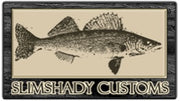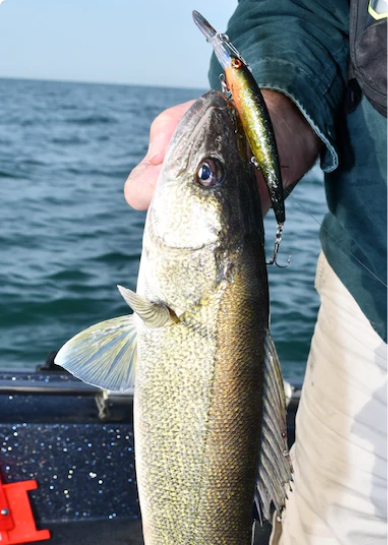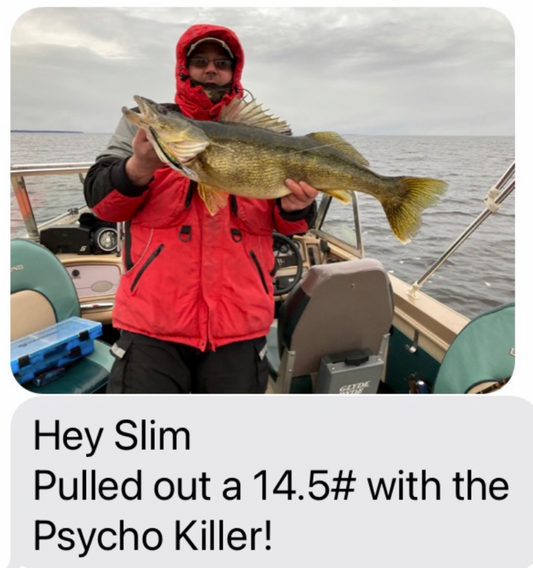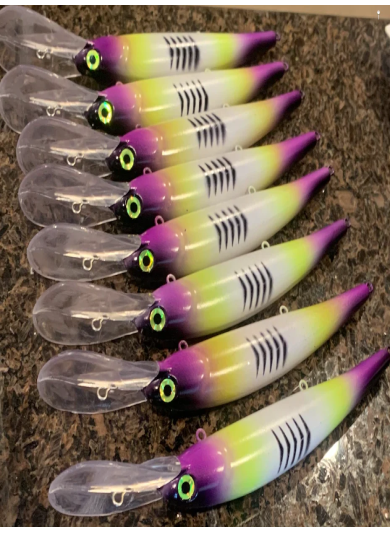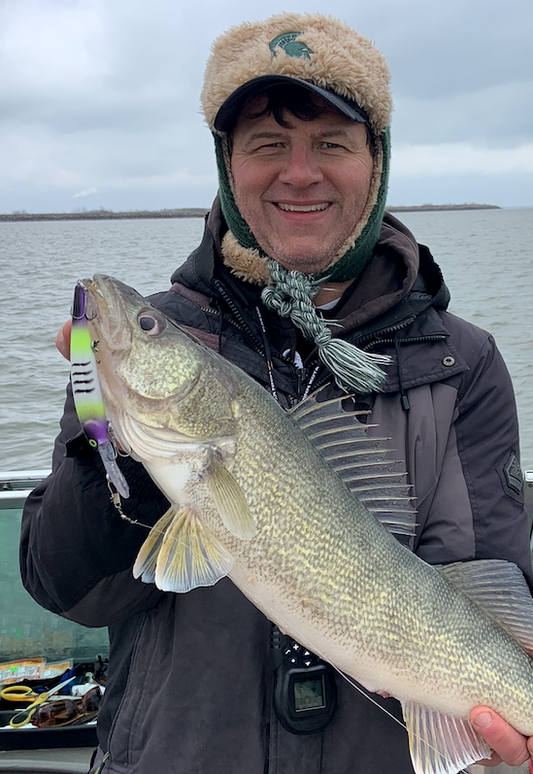Rigging Options for Off Shore Brand Planer Boards
Over the past few weeks, I have seen several people asking questions on Facebook about the best way to rig Off Shore brand boards when running crankbaits. Therefore, I decided to write an article to provide my perspective on this topic. If you ask 5 people this question, you might get 5 different answers. Therefore, this is just my opinion based on my personal experience, and lots of trial and error.
Front Clip Options:
There are a variety of options for clips/releases. I also recommend having different clips on the front and the back, which I will explain shortly.
For the front clip, I prefer clips that are designed to release when you get a fish on, or when you want to pull in a bait to check it or change it. For most of my boards, I have the black “medium” tension releases (see photo below).

I put the line into this release about half-way so that I can “pop” it out when I want to bring it in. It helps to have rods that are not too soft, or you will have trouble getting them to pop. When a board goes back, I just grab the rod, give it a quick “buggy-whip” and the line pops out of the front release. I wait about 5 seconds to allow the board to drop back and then start reeling in the fish.
Other great option for the front release is the Sam’s Pro Release (see below). With this release, you wrap the line around the cylinder several times and then snap it shut. These clips are by far the best option for running braid. They work well with mono too, but you have to “play” with the tension screw to get just the right amount of tension.

However, if you go this route, I highly recommend getting the real ones (black version), as the cheaper knock-offs from China (red ones) don’t work nearly as well. I learned this the hard way, as I tried them on several of my boards, before tossing a couple of them in the trash. The problem with the knockoffs, is that round cylinder that you wrap the line around is much harder and slippery than it is on the Sam’s version. That makes setting the releases about 10X harder than it is with the real ones. The line wants to slip off before you can even get them set. This doesn’t happen with the “real” ones.
Many people like using the OR-18 cam style clips on the front of their boards (see below). These clips are very easy to set and they hold the line extremely well, however, they are not designed to release. Therefore, I don’t recommend using them for your middle or outside boards.

Rear Clip Options:
For the back clips, the most common clips used are the red OR-16 clips from Offshore. They have a small pin in the center that ensures that your boards will not fall off the line when bring them in. You just need to make sure that you get the line behind that pin. (see below). However, the pads eventually wear out and then your boards start sliding down the line when you have a fish on. They make replacement pads for these clips; however, I have not figured out how to replace them, despite multiple attempts. I finally gave up and just bought new ones. There are a number of knock-off versions of these clips on the market, but I have found that they don't work very well. They don't grip as well and the pads wear out way too fast. They are fine for snap weights, but not for boards, IMO.

In 2023, a new option hit the market from Bluewater Angler (bluewaterangle.net). They are similar to the OR-16 release; however, the big difference is that the center pin is made from aircraft aluminum vs plastic. This should make them more durable, and they are also much easier to remove from the line when you have a fish on (see photo below). They are made in Michigan and are reasonably priced. I changed the back clips on all my boards to this release last year and have been very happy with them so far.

Another interesting option for the rear release is the Church Tackle “Lock-Jaw” clip (see below). I have not tried these clips yet; however, I recently purchased a couple to give them a shot. These clips have an adjustable tension screw, and they are easy to release when at the boat when you have a fish on. Especially for people that have arthritis in their hands and the pinch type clips are difficult to release. After I have some experience using them, I plan on doing a follow-up article to report my findings.

Tattle Flags:
Off Shore boards come with a stationary flag to make them more visible in the water. I have all of my Off Shore boards set up with “tattle-flags”, which allows a fish to pull the flag down indicating that you have a bite. This is especially critical when pulling spinners in the summer, when there are lots of “junk-fish” around trying to steal your crawlers. Off Shore sells “tattle-flag” kits with all of the components needed to make this conversion. That said, I made my own DIY tattle-flags for less than $4 per board. There are videos on YouTube that show you how to do this. It is very simple and I recommend making your own.
There is a minor adjustment that should be made to your tattle-flag system when pulling cranks. Deep diving cranks create a significant amount of resistance; therefore, if you have your tattle-flags set for pulling spinners, the cranks may pull the flag down by themselves. For this reason, I recommend adjusting the tension on the springs by moving it to a lower hole on the board. If your springs are too weak or stretched out, you can quickly add tension with rubber bands. I keep a bag of rubber bands in my boat at all times for this reason. Simply put one end of the rubber band over the flag and slide it down to the board. Then put the other end of the rubber band around the front release. After you have it around both, stretch the rubber band around the front of your board and you are done. By using this method, it is very easy to adjust the tension without messing with the springs.
With cranks, I don’t care if the flags go down or not, as we are normally catching primarily larger fish and it is usually obvious when we have a fish on. I also keep my drags set super light, with the clickers on; therefore, I can hear the reels clicking when a fish bites.
Other Tips:
Lastly, always remember to write your name and phone number on your boards in case one happens to fall off. If this happens, hit your waypoint button immediately, as it usually takes a while to bring in your gear and go back to get the board.
I also take note of how my boards are running when I try to line them up. Even if you are running all Off Shore boards, with similar baits behind them, they won't all run the same. Some of them want to run further forward and others want to fall back. That can make it almost impossible to line them up unless you run them in the right order. Find the one that wants to run the farthest forward and mark that as your outside board. You can always let that one out further to line it up. Find the one that wants to fall back and label that as the inside board, as you can always bring that one in further to line it up. Mark the remaining boards as "middle" boards. You can also number them 1, 2, 3, 4, etc, however, then you have to remember if you are counting from in to out, or out to in.
The primary reason for wanting them lined up is so that you can easily tell if you have a weed or small fish on one of them, as that one will drop back out of line. It also keeps them from tangling.
Once again, there are likely dozens of variations and options that I did not mention in this article that may work as well or better. However, these are my opinions based on personal experience. If you have any questions or suggestions, shoot me an email at slimshadycustoms@gmail.com.
Tight lines and see you at the ramp!
